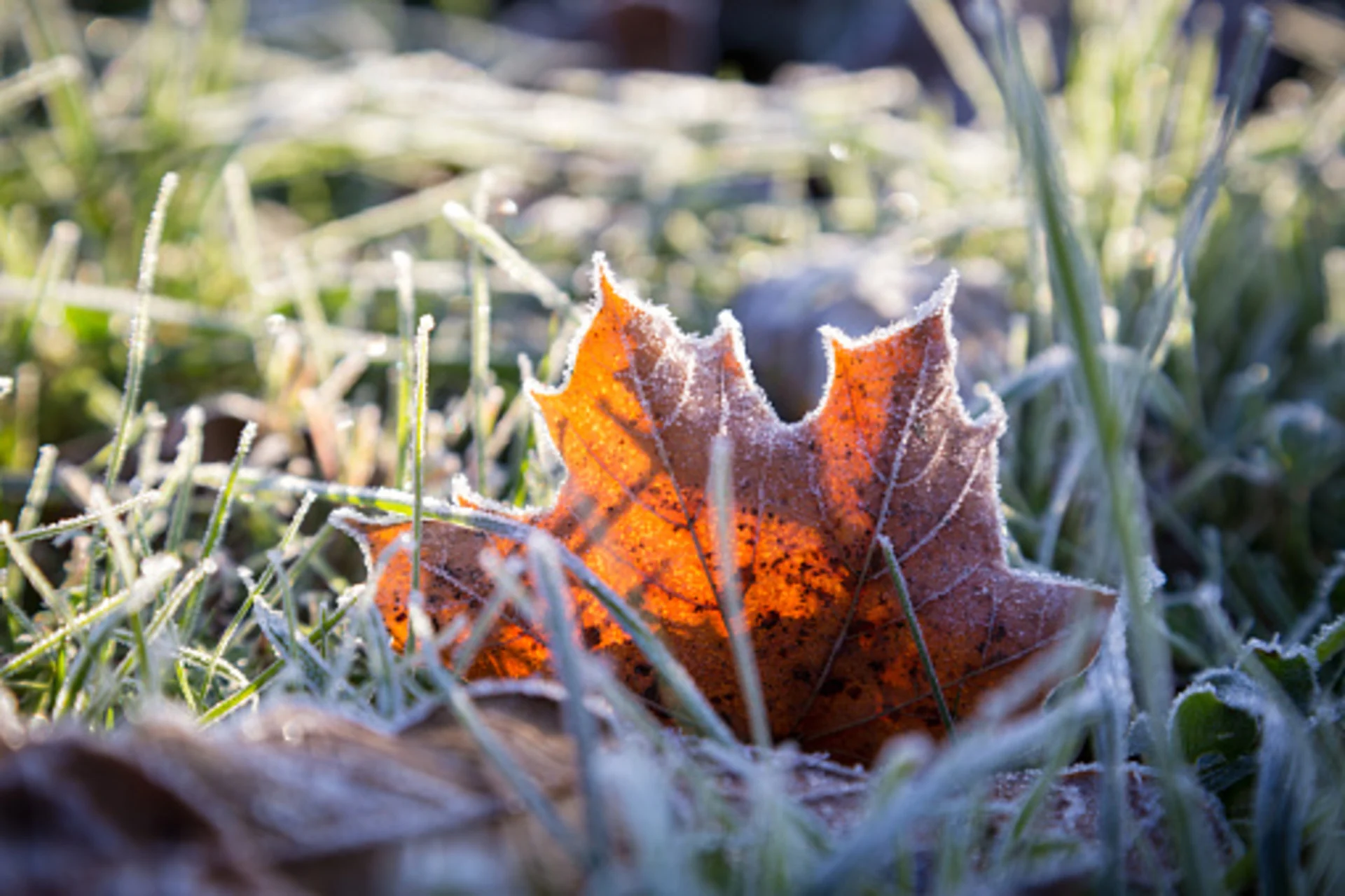
A frost-less fall, Canadian seasons shifting before our eyes
Cooler air is finally beginning to flush further south across eastern Canada, beyond fashionably late for this time of year.
Have you scraped your windshield yet? Frost distribution has been atypical, to say the least, across North America this fall season. A recent analysis has indeed found our seasons misshapen compared to decades earlier.
SNEAK PEEK: Brace for a change, Canada: Pattern flip-flop as we fall into winter
The position of the jet stream has carved out a stark contrast across Canada this October. Toronto Island has remained above 15°C through the overnight ten times this month, while Vancouver hasn't reached 15°C for a single minute.

On October 19th, the temperature climbed to 23°C in the City of Sudbury, almost 400 kilometres north of the City of Toronto.
With Halloween approaching, surely those pumpkins have frosted over a few times by now? Nope. The mean temperature through October 18th has been nearly 15°C, with the average typically closer to 7°C.
The average overnight low anomaly is even more haywire. By October 18th, the average overnight low had been over 11°C for Sudbury. That's a warmer average nighttime low in August and June. Keep in mind, an average low during this period is a frosty 3°C.
Thunder Bay's frost was so late that it mimics what climate models predict will be an average first frost in the year 2060.

On the morning of October 19th, along the shores of James Bay, Waskaganish, the territory of Eeyou Istchee, recorded its first temperature below freezing for the fall season, roughly a month late.
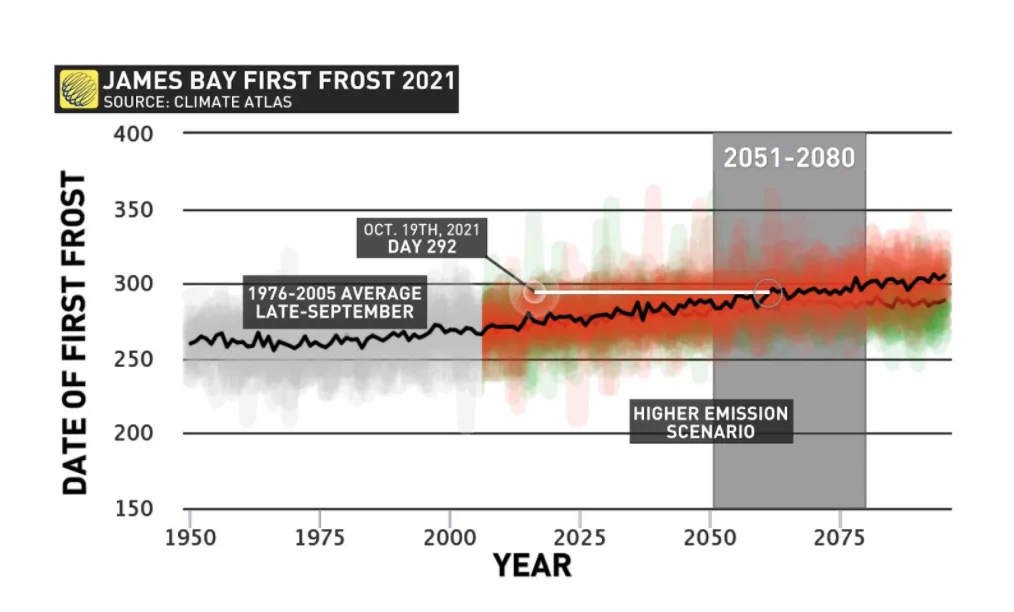
Remarkable, being about 900 kilometres north of the Greater Toronto Area.
Vancouver Island has recorded temperatures below the freezing mark, along with the northern fringes of Mexico. Yes, even Mexico.
Even half the entire state of New Mexico has dipped below the freezing mark.
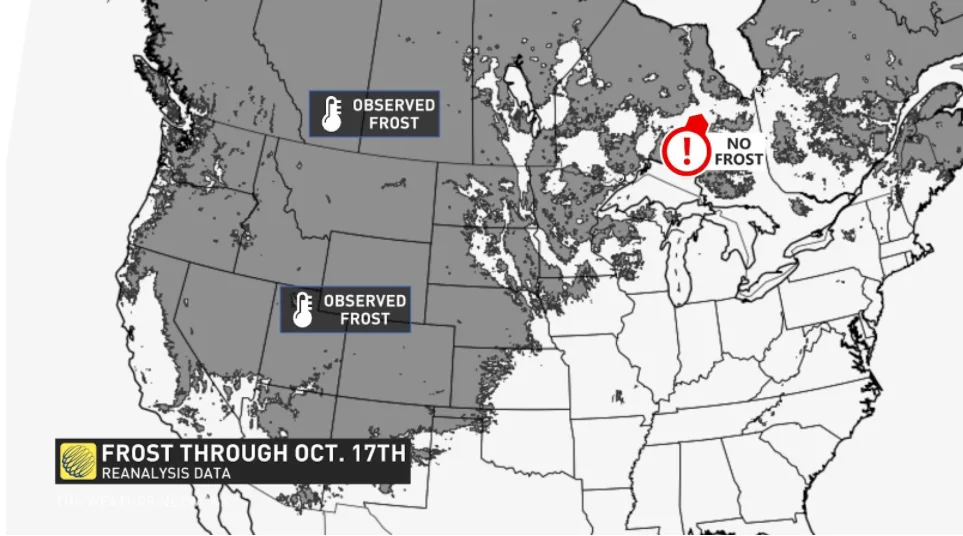
As we speak, cooler air is finally beginning to flush further south across eastern Canada, beyond fashionably late.
Our seasons are fundamentally changing. Meteorologists refer to the winter months as December through February; this rigid definition doesn't tell the story of our changing climate.
Climatologist Brian Brettschneider has already done the heavy lifting here, but his thorough analysis paints a changing climate, re-writing our traditional seasons.
We're now dealing with a summer that's upwards of two weeks longer than it used to be during the latter half of the 20th century.
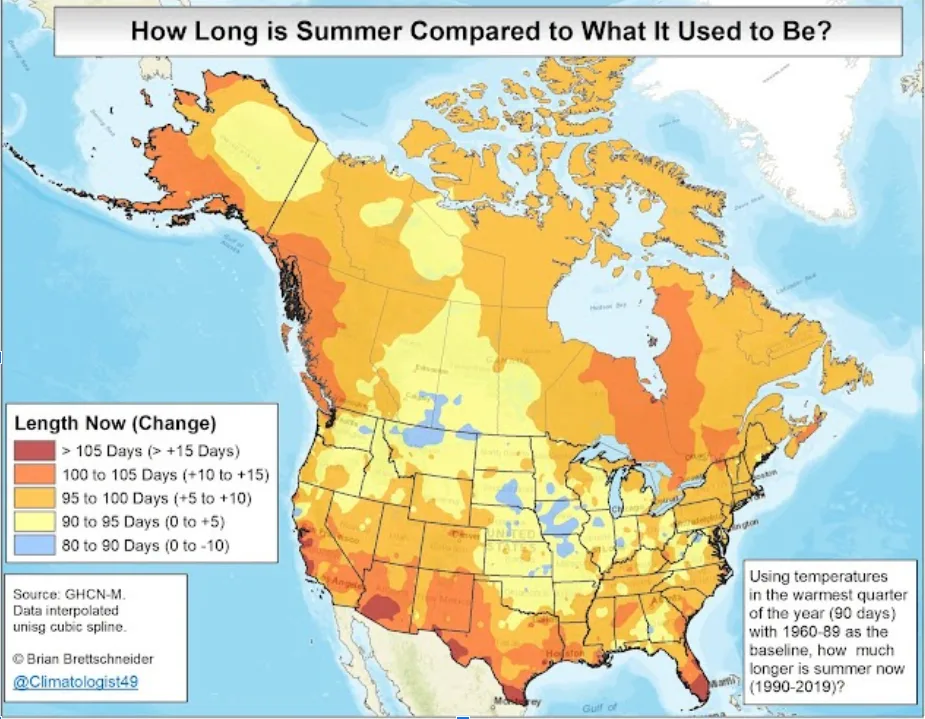
As for winters, they've shrunk by 2-3 weeks across parts of northwestern Ontario – and by more than a month across northern Canada.
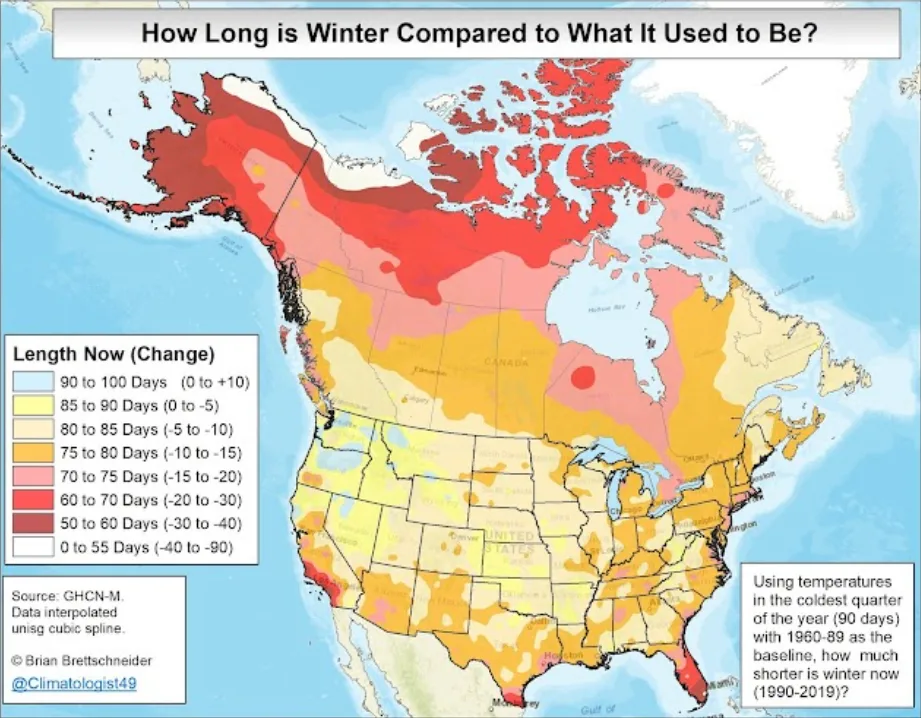
It's telling when we take the temperature of northern Canada over recent days. Extreme temperature anomalies are plaguing Nunavut. Alert, for example, had temperatures hovering just below the freezing mark, making the temperature anomaly close to 20°C above the seasonal mark.
